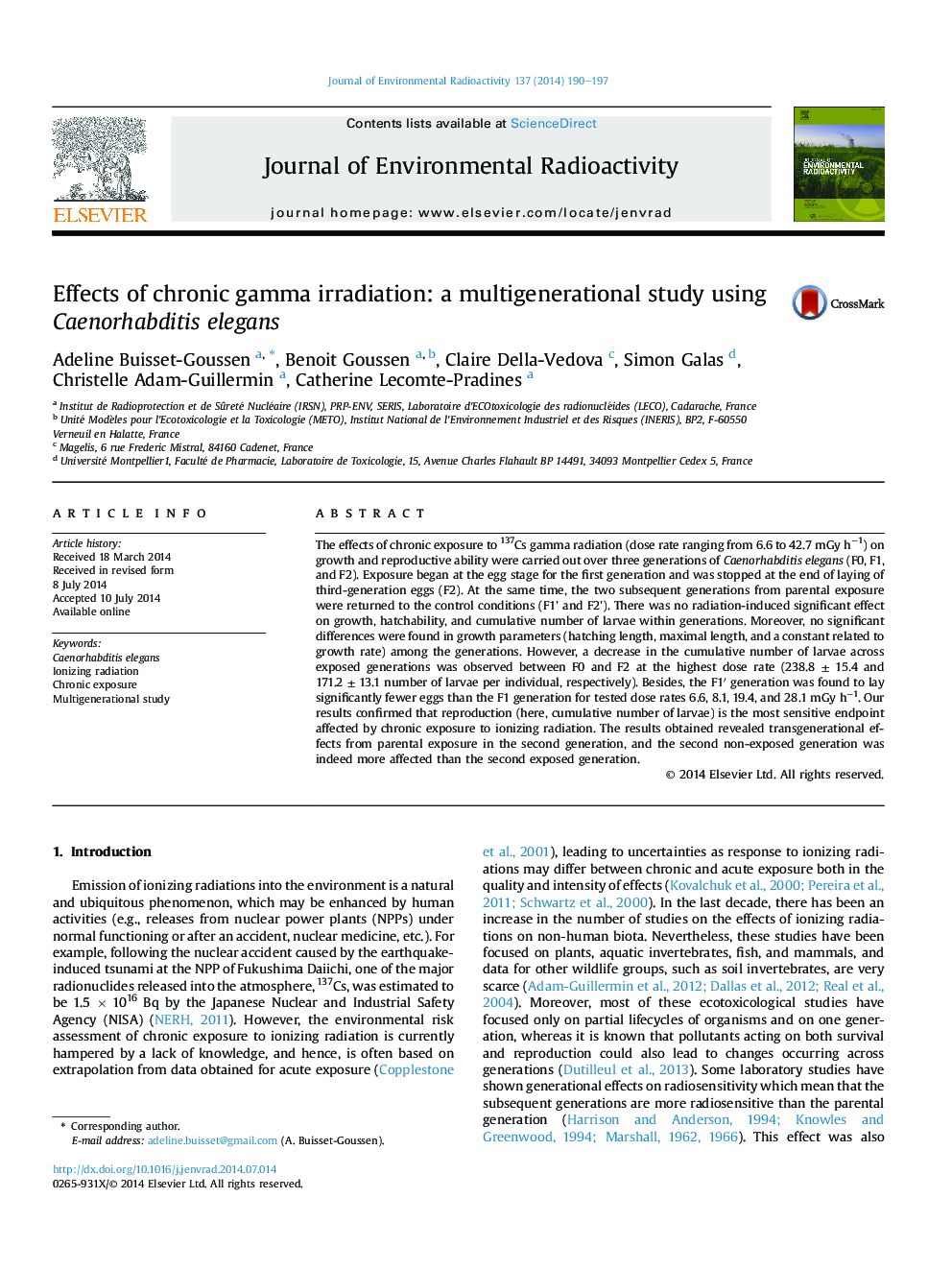| Article ID | Journal | Published Year | Pages | File Type |
|---|---|---|---|---|
| 8082987 | Journal of Environmental Radioactivity | 2014 | 8 Pages |
Abstract
The effects of chronic exposure to 137Cs gamma radiation (dose rate ranging from 6.6 to 42.7 mGy hâ1) on growth and reproductive ability were carried out over three generations of Caenorhabditis elegans (F0, F1, and F2). Exposure began at the egg stage for the first generation and was stopped at the end of laying of third-generation eggs (F2). At the same time, the two subsequent generations from parental exposure were returned to the control conditions (F1' and F2'). There was no radiation-induced significant effect on growth, hatchability, and cumulative number of larvae within generations. Moreover, no significant differences were found in growth parameters (hatching length, maximal length, and a constant related to growth rate) among the generations. However, a decrease in the cumulative number of larvae across exposed generations was observed between F0 and F2 at the highest dose rate (238.8 ± 15.4 and 171.2 ± 13.1 number of larvae per individual, respectively). Besides, the F1â² generation was found to lay significantly fewer eggs than the F1 generation for tested dose rates 6.6, 8.1, 19.4, and 28.1 mGy hâ1. Our results confirmed that reproduction (here, cumulative number of larvae) is the most sensitive endpoint affected by chronic exposure to ionizing radiation. The results obtained revealed transgenerational effects from parental exposure in the second generation, and the second non-exposed generation was indeed more affected than the second exposed generation.
Related Topics
Physical Sciences and Engineering
Energy
Nuclear Energy and Engineering
Authors
Adeline Buisset-Goussen, Benoit Goussen, Claire Della-Vedova, Simon Galas, Christelle Adam-Guillermin, Catherine Lecomte-Pradines,
